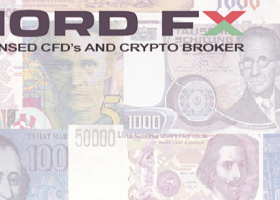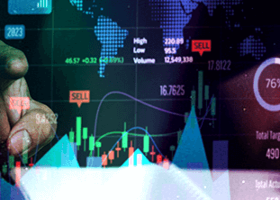Those trading in the foreign exchange market (forex) rely on the same two basic forms of analysis that are used in the stock market: fundamental analysis and technical analysis. The uses of technical analysis in forex are much the same: the price is assumed to reflect all news, and the charts are the objects of analysis. But unlike companies, countries have no balance sheets, so how can fundamental analysis be conducted on a currency?
Since fundamental analysis is about looking at the intrinsic value of an investment, its application in forex entails looking at the economic conditions that affect the valuation of a nation's currency. Here we look at some of the major fundamental factors that play a role in a currency's movement.
Economic Indicators
Economic indicators are reports released by the government or a private organization that details a country's economic performance. Economic reports are the means by which a country's economic health is directly measured, but remember that many factors and policies will affect a nation's economic performance.
These reports are released at scheduled times, providing the market with an indication of whether a nation's economy has improved or declined. These reports' effects are comparable to how earnings reports, SEC filings, and other releases may affect securities. In forex, as in the stock market, any deviation from the norm can cause large price and volume movements.
You may recognize some of these economic reports, such as the unemployment numbers, which are well-publicized. Others, like housing stats, receive less coverage. However, each indicator serves a particular purpose and can be useful.
Gross Domestic Product (GDP)
GDP is considered the broadest measure of a country's economy, and it represents the total market value of all goods and services produced in a country during a given year. Since the GDP figure itself is often considered a lagging indicator, most traders focus on the two reports that are issued in the months before the final GDP figures: the advance report and the preliminary report. Significant revisions between these reports can cause considerable volatility. The GDP is somewhat analogous to the gross profit margin of a publicly traded company in that they are both measures of internal growth.
Retail Sales
The retail-sales report measures the total receipts of all retail stores in a given country. This measurement is derived from a diverse sample of retail stores throughout a nation. The report is particularly useful as a timely indicator of broad consumer spending patterns that is adjusted for seasonal variables. It can be used to predict the performance of more important lagging indicators and to assess the immediate direction of an economy. Revisions to advanced reports of retail sales can cause significant volatility. The retail sales report can be compared to the sales activity of a publicly-traded company.
Industrial Production
This report shows a change in the production of factories, mines, and utilities within a nation. It also reports their "capacity utilization," the degree to which each factory's capacity is being used. It is ideal for a nation to see a production increase while being at its maximum or near-maximum capacity utilization.
Traders using this indicator are usually concerned with utility production, which can be extremely volatile since the utility industry, and in turn, the trading of and demand for energy is heavily affected by changes in weather. Significant revisions between reports can be caused by weather changes, which in turn can cause volatility in the nation's currency.
Consumer Price Index (CPI)
The CPI measures change in the prices of consumer goods across over 200 different categories. This report, when compared to a nation's exports, can be used to see if a country is making or losing money on its products and services. Be careful, however, to monitor the exports — it is a popular focus with many traders because the prices of exports often change relative to a currency's strength or weakness.
Other major indicators include the purchasing managers index (PMI), producer price index (PPI), durable goods report, employment cost index (ECI) and housing starts. And don't forget the many privately issued reports, the most famous of which is the Michigan Consumer Confidence Survey. All of these provide a valuable resource to traders if used properly.
Using Economic Indicators
Since economic indicators gauge a country's economic state, changes in the conditions reported will therefore directly affect the price and volume of a country's currency. It is important to keep in mind, however, that the indicators discussed above are not the only things that affect a currency's price. Third-party reports, technical factors, and many other things also can drastically affect a currency's valuation. When conducting fundamental analysis in the forex market:
- Keep an economic calendar on hand that lists the indicators and when they are due to be released. Also, keep an eye on the future; often markets will move in anticipation of a certain indicator or report due to be released at a later time.
- Be informed about the economic indicators that are capturing most of the market's attention at any given time. Such indicators are catalysts for the largest price and volume movements. For example, when the U.S. dollar is weak, inflation is often one of the most-watched indicators.
- Know the market expectations for the data, and then pay attention to whether the expectations are met. That is far more important than the data itself. Occasionally, there is a drastic difference between the expectations and actual results. If so, be aware of the possible justifications for this difference.
- Don't react too quickly to the news. Often numbers are released and then revised, and things can change quickly. Pay attention to these revisions, as they may be a useful tool for seeing the trends and reacting more accurately to future reports.
The Bottom Line
There are many economic indicators, and even more private reports, that can be used to evaluate forex fundamentals. It's important to take the time to not only look at the numbers but also understand what they mean and how they affect a nation's economy. When properly used, these indicators can be an invaluable resource for any currency trader.
Utility ⚒
EasyTradePad MT4 - https://www.mql5.com/en/market/product/72256
EasyTradePad MT5 - https://www.mql5.com/en/market/product/72454
Risk manager MT4 - https://www.mql5.com/en/market/product/72214
Risk manager MT5 - https://www.mql5.com/en/market/product/72414
Market Screener MT4 - https://www.mql5.com/en/market/product/72380
Market Screener MT5 - https://www.mql5.com/en/market/product/72400
Indicators 📈
3 in 1 Indicator iPump MT4 - https://www.mql5.com/en/market/product/72257
3 in 1 Indicator iPump MT5 - https://www.mql5.com/en/market/product/72442
Power Reserve MT4- https://www.mql5.com/en/market/product/72392
Power Reserve MT5 - https://www.mql5.com/en/market/product/72410
This is just a shortlist of really high-quality products that will improve your trading. Almost all products have MT4 and MT5 version/
A complete list of products was created by me by the link in the profile - https://mql5.com/en/users/batudaev/seller#products



